

Table of contents
- Most famous varieties
- Location
- substrate
- plant and repot
- Pour
- Fertilize
- Cut
- propagation
- wintering
- pests
- Diseases
- toxicity
A dragon palm can be found in almost every household. It is almost part of the basic equipment. It is also known as the dragon tree. But the name is deceptive: it is neither a tree nor is it terrifying. On the contrary: its trunk is slender and extraordinarily branched. Countless lancet-like leaves, mostly brightly colored, sprout at its tips. Despite her beauty, she expects little attention.
Most famous varieties
More than 50 species of the dragon palm, botanically Dracaena, are known in tropical and subtropical regions of the world. In the climate there, they reach stately heights and are actually reminiscent of trees. Some species have made it to Central Europe, but only as houseplants and are more modest in growth. The following types are available in specialist shops and occasionally also in discounters:
- Dracaena marginata - the easy-care "beginner's model"
- Dracaena sanderana - with numerous side shoots
- Dracaena surculosa - max 70 cm high and heavily branched
- Dracaena marginata 'Tricolor' - green, pink and cream striped leaves
- Dracaena deremensis, Dracaena draco, Dracaena fragrans - all high-growing to approx. 1.5 m, slight differences in leaf color and leaf shape.
A notice:
The name Dracaena comes from the Greek and means "female dragon".
Location
In your own four walls you will find one or the other free space on which a green plant can be placed decoratively. But not every place offers optimal growth conditions. Plants like it bright, so a dragon tree is also happy about a lot of light. However, he is undemanding and, if need be, is content with a half-shade place. This is especially true for specimens with purely green leaves.
- like brightness, without direct sun
- Morning and evening sun is acceptable
- too much sunlight burns the leaves
- green-leaved species are also content with little light
- the more colored the leaves, the more light is needed
- the optimal room temperature is between 20 and 25 degrees Celsius
- love high humidity
- bright, humid bathroom is an ideal location
Tip:
Dragon trees like to stretch towards the light. The result is bizarrely deformed plants. Therefore, turn the plant pot regularly to get a straight and beautiful growth.
substrate
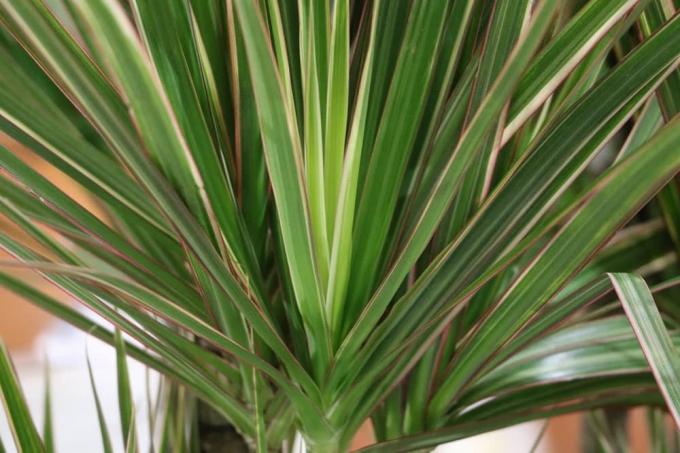
Special palm soil is commercially available that is well suited for the dragon tree. But it is not a must, especially since it is more expensive than conventional potting soil.
- Palm soil works well, but is not necessary
- Compost-based potting soil is sufficient
- add some sand to make the soil permeable
- Add expanded clay, gravel or crushed lava
- Humus and clay are also good for the palm
plant and repot
The first dragon palm usually brings its pot from the trade. At the beginning, the plant can be content with this for a while. Over the years, however, a move to a larger root home is due. Even small dragon trees that you have grown yourself need the right pot from the start.
- the planter must be big enough
- with many drainage holes
- Prefer pots with an irrigation system
- repot smaller plants every 2-3 years
- repot large plants annually
- the new pot should have a few centimeters more circumference
The repotting or Planting is easy:
- Loosen the soil around the edge of the pot. This is easiest to do with a dull knife.
- Carefully lift the palm tree out of the pot without damaging the roots.
- Gently tap off the old soil.
- Cut off dead or damaged roots. The healthy root system can also be trimmed a little with scissors.
- Fill the new pot with some soil.
- Place the palm tree in the pot and hold the trunk straight.
- Fill in the gaps with soil.
- Press the earth lightly.
- Water the dragon palm well.
Pour
The dracaena likes moist environments very much. He is therefore happy if he is watered regularly. He thanks it with rapid growth. However, excess water that collects in the saucer should be poured away as soon as possible. If the water stays longer in the saucer, the roots, which are sensitive to moisture, will soon become mouldy.
- water regularly
- Soil should not dry out
- no water should remain in the saucer
- Water a lot from March to August
- Reduce watering in winter
- Spray dracaena with warm water in winter
- Remove dust from leaves with a damp cloth
- alternatively: rinse off in the shower
- Dragon palm does well in hydroponics
- Containers with an irrigation system reduce the watering intervals enormously
A notice:
This adaptable palm can survive occasional “dry spells”. However, leaves trickle to the ground and the once impressive splendor says goodbye bit by bit.
Fertilize

The dragon palm is a fast-growing plant that relies on fertilizer during the summer months. This is best given together with the irrigation water.
- fertilize every two weeks
- Liquid fertilizer is ideal
- Add fertilizer to the irrigation water
- do not fertilize from October to January
Cut
Dragon palms do not need pruning to develop healthily. The larger the plant grows, the more impressive its appearance. The astonished plant lover will not like to stop this development with scissors. But at some point the tree will completely fill the available space. Then at the latest it is time for a move or the scissors.
- Dragon palm does not need pruning
- however, it may be shortened without being damaged
- when the plant has grown too large
- then trim the shoot tips vigorously
- Dragon palm forms new shoots from sleeping eyes
- unsightly grown shoots may also be removed
- early spring is well suited for all pruning measures
- Cutting as a maintenance measure for denser growth
- “Behead” the dragon palm for this
Tip:
Cut off shoot tips are far too good for the trash can. With a little work, patience and luck, new dragon trees will grow from them. In a mixture of peat soil and sand, there is a good chance that new roots will form on the shoots.
propagation
Propagating the dragon palm is so easy that even a beginner should have no problems with it. If the desire for new palm trees is awakened, or cut shoots should be used sensibly, the following "step-by-step" instructions will help.
- Choose a sharp knife. Sharp scissors are more suitable for thicker trunks.
- Cut off the top piece of the head drift off The cut piece should be at least be 10 cm long.
- Seal the open interface with wax.
- Cut off most of the leaves from the cutting. Only the top centimeter should still have leaves. In this way, the energy is concentrated on root growth.
- Place the cuttings in a vase filled with water on a bright but sun-protected window sill.
- After 2 to 3 weeks, new roots will form on the trunk.
- Plant the rooted cutting in a pot. Be careful not to damage the roots.
wintering
Overwintering the dragon tree is uncomplicated. Most of the time he is allowed to stay in his usual room. Only the light intensity needs to be checked. If he stands in a shady place, it will be even darker for him in winter. Maybe even too dark. Then he needs to be moved closer to the window. Since the indoor climate changes in winter and growth is severely reduced, the dragon tree needs care that is geared to this.
- Dragon palm must be warm even in winter
- dry heating air is harmful to the foliage
- therefore avoid a location near the heater
- Spray the plant regularly with water
- water sparingly
- do not fertilize
pests

Diseases and pests are rare on a well cared for and healthy dragon tree. With the wrong care and in an unfavorable location, things can look very different. If watering is neglected, spider mites, scale insects or thrips will spread to it. Especially in winter, the dry heating air promotes pest infestation, which spreads rapidly from one houseplant to the next. Therefore, always ensure that the bale does not dry out and that the humidity is increased in winter. Check your plants regularly so that you can recognize an infestation early and take appropriate measures.
Diseases
The lower leaves regularly turn brown, wither and eventually fall off. This is part of the growth process and is nothing to worry about as long as new leaves keep growing. If, on the other hand, the tips of the leaves are dry and brown, this is a clear sign that something is wrong.
- too low humidity
- the substrate is too dry
- change of location too quickly
- Touching them in passing can also damage the tips
Yellow leaves and yellow shoot tips are clear symptoms of damaged roots. Persistent wetness caused this damage. The plant needs to be repotted urgently. Before doing this, the root ball should be cleaned and rotten roots cut off. So that the plant can recover, waterlogging must be consistently avoided in the future.
toxicity
The sap of the dragon tree contains saponins. These are relatively non-toxic to humans. In addition, the saponins make the plant bitter. Small children who taste plant parts usually spit them out immediately. The danger is therefore low that the saponins end up in the digestive tract, where they are not well absorbed anyway. The dragon tree is more poisonous for animals. The saponins can damage the mucous membranes and the red blood cells. Dogs and cats seem to be particularly sensitive to this. They need to be kept away from it as they like to nibble on plants when bored. While the large animals are properly trained to avoid poisonous plants, small puppies and kittens are more at risk. They must not be given free access to poisonous plants. You can usually tell whether your pet has eaten parts of the dragon palm by the following symptoms:
- Weakness, vomiting and diarrhea
- foam in the mouth
- drowsiness and convulsions
- Fever
See a veterinarian immediately. However, these symptoms can also be caused by other poisonous plants. Therefore, tell the doctor which plants you have.
A notice:
Asthmatics and allergy sufferers sometimes react unpleasantly to the secretions of the dragon tree, which they absorb with the air they breathe. Say goodbye to the dragon tree if you feel unwell, have shortness of breath, or break out in a sweat.
 garden editorial
garden editorial I write about everything that interests me in my garden.
Learn more about palm trees
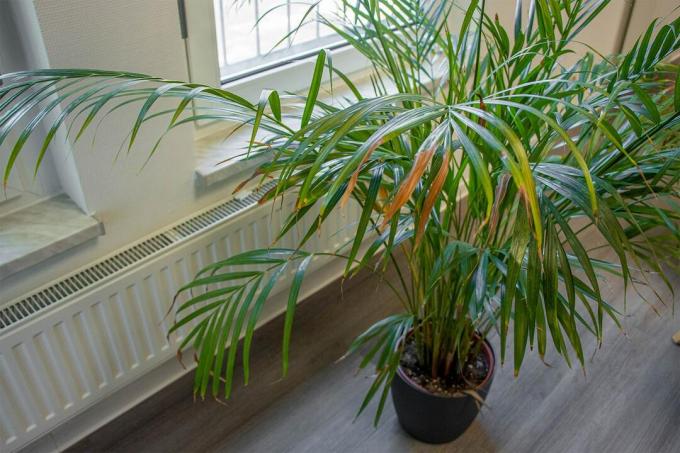
Palm leaves hanging: save yucca & co
Palm trees give the home a southern flair. However, if Yucca & Co. let their leaves droop, their sight is rather desolate. The causes of hanging palm fronds vary. A rescue attempt is always worthwhile.
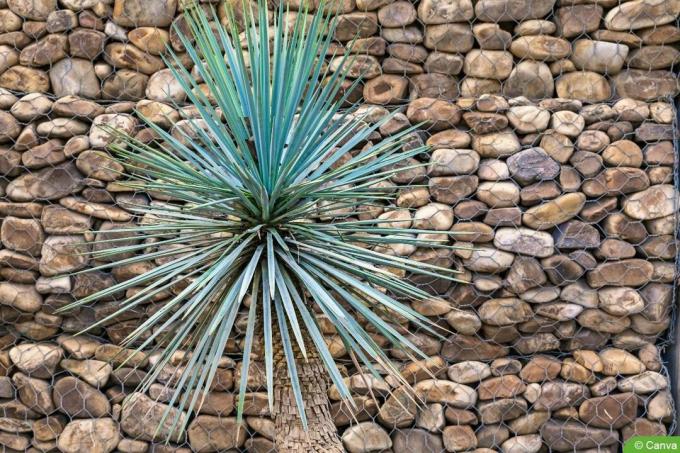
Blue palm lily, Yucca rostrata: 12 tips for care & Co.
The blue yucca (Yucca rostrata) is one of the most fascinating Yucca species. Since it hardly requires any care, it is also suitable for the office. Planted in the garden, it is considered hardy when it is dry.
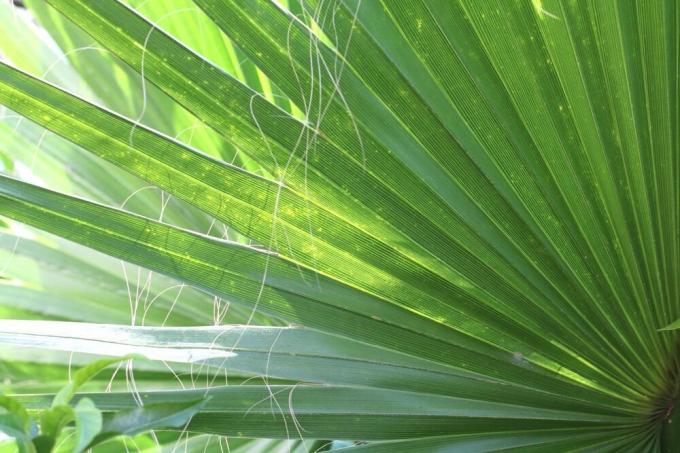
Washington Palm: Care From A-Z | Overwinter Washingtonia robusta
The Washington palm is a decorative plant that can grow to an impressive size. Due to the lack of winter hardiness, the plant is usually kept indoors in this country. When it comes to care, the palm makes certain demands so that healthy development can occur.

Areca palm, Dypsis lutescens: basics of care
The Areca Palm is a beautiful plant for indoor greenery. When it comes to care and location, the palm has certain requirements, if these are met, the plant will thrive. In order for the plant to grow constantly green, it needs the right lighting conditions.
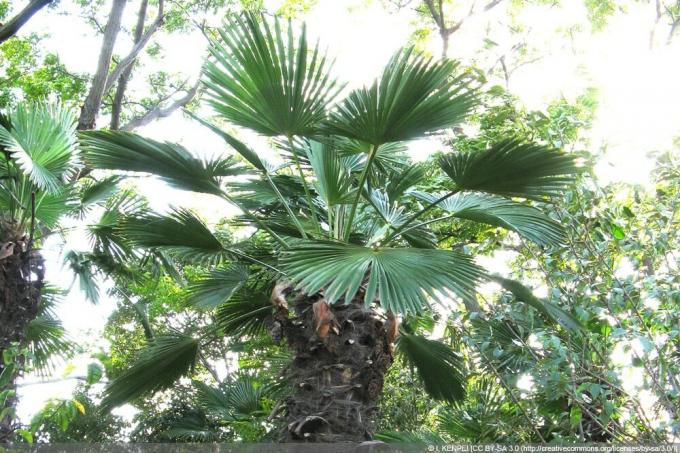
Wagner's hemp palm, Trachycarpus wagnerianus: Care from A-Z
If you want exotic flair in your garden or on your terrace, you can't avoid Wagner's hemp palm. No wonder: the extremely decorative umbrella palm not only looks impressive, but is also very robust. More about this is here.

Candle palm lily, Yucca Gloriosa – Care from A-Z | Is she hardy?
A yucca is better known to most as an exotic houseplant, the candle palm lily (bot. Yucca gloriosa) is also ideal as an outdoor plant, bringing a touch of tropical flair to your garden.



